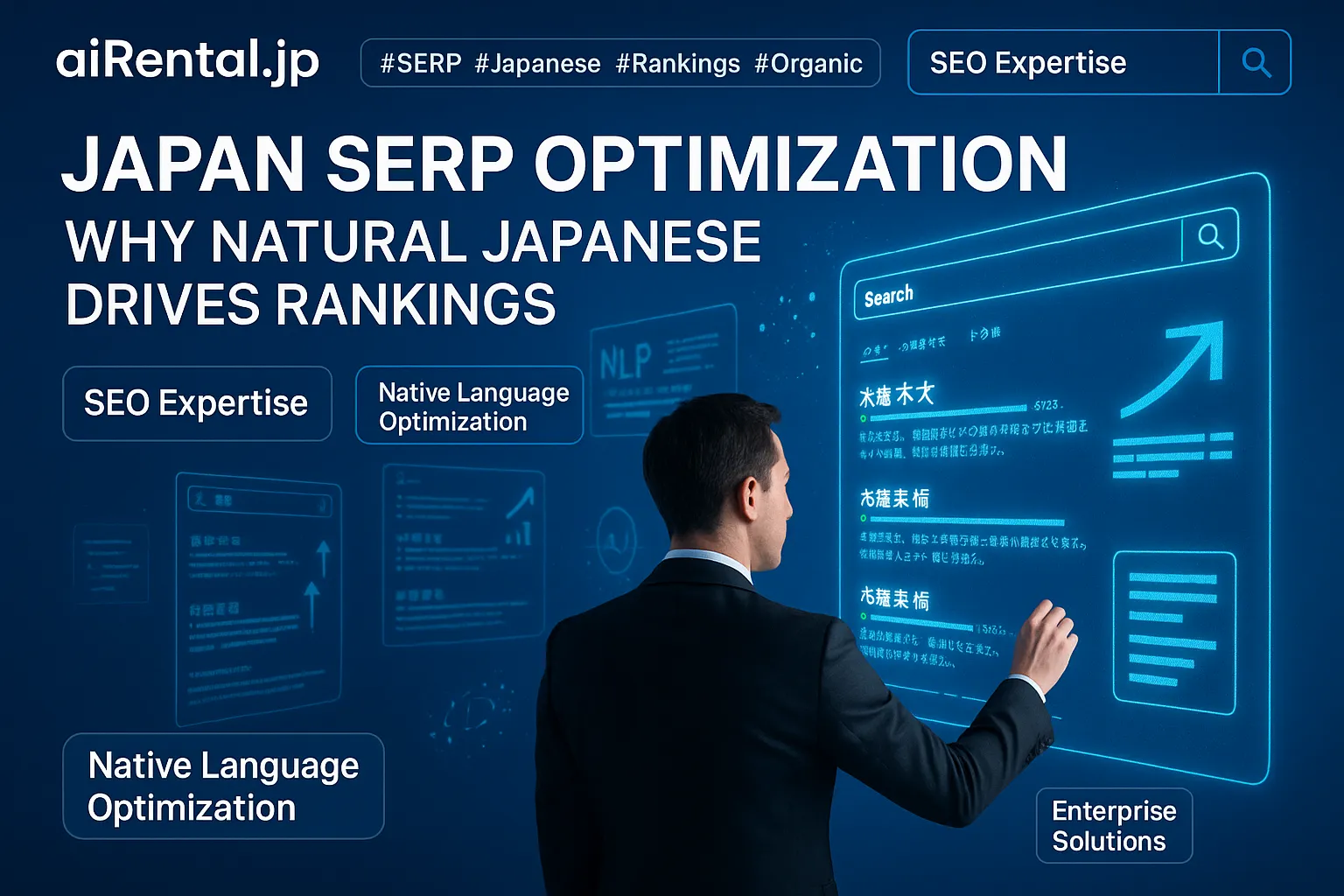- Introduction – Natural Language Is Key to SEO in Japan
- 1. Characteristics of Japanese Search Queries – Short and Direct
- 2. Optimizing Heading Structures (H1/H2/H3)
- 3. Internal Linking – A Core Part of SERP Optimization
- 4. Stagnation Patterns of Direct-Translation Content
- 5. How to Improve – Steps for Natural Japanese SEO
- 6. Case Studies – From Stagnation to Growth
- Conclusion – Natural Japanese Wins Rankings
Introduction – Natural Language Is Key to SEO in Japan
When overseas companies enter the Japanese market, a common mistake is to simply translate their English website.
While this makes the content readable in Japanese, it often fails to achieve strong rankings in Google’s search results (SERP).
The reason is simple: Japanese search queries, headings, and keyword usage follow different patterns than English.
This article explains why natural Japanese is essential for ranking, common stagnation patterns caused by direct translations, and step-by-step improvements to optimize for Japan’s SERP.
1. Characteristics of Japanese Search Queries – Short and Direct
In English, queries often use longer phrases with modifiers like “how to,” “best,” or “guide.”
In contrast, Japanese queries are shorter and more direct.
- English: “best AI service providers in Tokyo”
- Japanese: “AI サービス 東京”
👉 Without adapting to these query patterns, translated content rarely matches actual search behavior, leading to poor rankings.
2. Optimizing Heading Structures (H1/H2/H3)
Google places strong weight on keywords in headings.
However, direct translations of English headings often sound unnatural in Japanese.
- Literal translation (unnatural):
- H2: “我々のサービスを開始する方法” (“How to start our service”)
- Localized (natural):
- H2: “AIサービスを始めるには” (“How to start using AI services”)
👉 Headings must reflect how Japanese users actually search, not just English translated literally.
3. Internal Linking – A Core Part of SERP Optimization
Internal links are not just for navigation; they serve as signals of relevance to Google.
Examples:
- For .jp domains → FAQ (.jp Domain Service)
- For support needs → Support Service
By carefully linking to related services, you strengthen topical authority and improve ranking potential.
4. Stagnation Patterns of Direct-Translation Content
Many overseas companies fall into the same cycle:
- Publish content with literal translations
- Grammatically correct but unnatural → not aligned with real search queries.
- High bounce rate and short session duration
- Japanese users feel the wording is “off” and leave quickly, lowering SEO signals.
- Poor SERP performance
- Google judges the site as low in user satisfaction, causing rankings to stall.
5. How to Improve – Steps for Natural Japanese SEO
Step 1: Research Search Queries
Identify actual Japanese keywords and adapt them into headings and body text.
Step 2: Replace Literal Translations with Natural Japanese
Example: “AIソリューションを実装する” → “AI導入の流れ” (“Steps to introduce AI”).
Step 3: Optimize Internal Links
Add contextual links to FAQs and support services to strengthen topical relevance.
Step 4: Continuous Updates
SEO trends evolve; review and adjust content regularly to keep expressions natural.
6. Case Studies – From Stagnation to Growth
- Case 1: SaaS company
- Used the literal translation “顧客成功マネジメントツール” (Customer success management tool).
- Changed to “カスタマーサクセスツール” (Customer success tool).
- SERP ranking improved from page 2 to page 1.
- Case 2: Education service
- Used “オンライン学習プラットフォーム” (online learning platform).
- Changed to “オンライン学習サービス” (online learning service).
- Organic traffic increased by 30%.
Conclusion – Natural Japanese Wins Rankings
- Japanese queries are short and direct
- Headings must use natural Japanese keywords
- Internal links strengthen SEO relevance
- Literal translations cause stagnation
- Regular improvements drive long-term results
👉 For overseas companies, achieving results in Japan requires not just translation, but SEO Japan strategies built on natural Japanese language.
📩 Contact Us
https://www.airental.jp/inquiry/
For inquiries about AI domain leasing, .jp domain rental, and website localization for Japan.




コメント